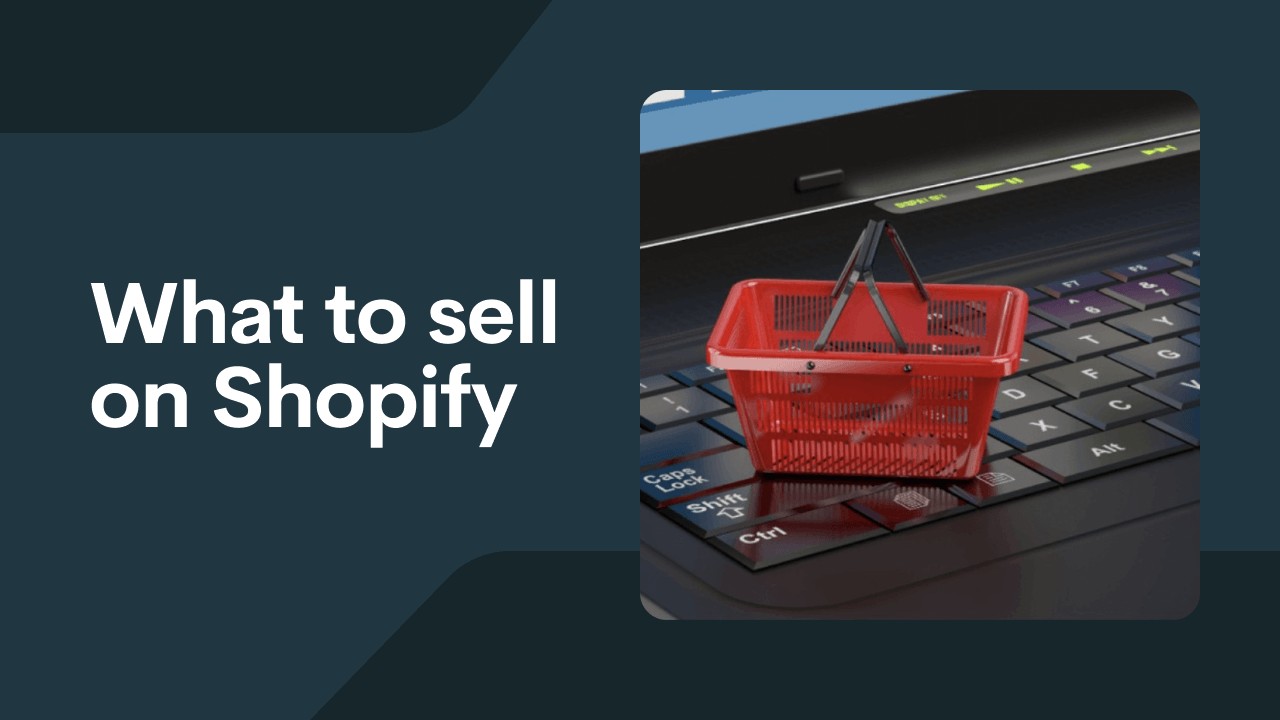
What to sell on Shopify?
21 March 2024Finding Your Niche: What to Sell on Shopify for Success
In the vast landscape of e-commerce, Shopify stands out as a leading platform empowering entrepreneurs to turn their dreams into reality. With its user-friendly interface and robust features, Shopify offers a gateway for individuals to start their own online stores and carve out their niche in the market. But the question remains: what should you sell on Shopify to ensure success? In this article, we’ll explore various strategies and considerations for finding the right products to sell on Shopify.
Identify Your Passion and Expertise
One of the first steps in determining what to sell on Shopify is to tap into your passion and expertise. Reflect on your interests, hobbies, and areas of expertise. What products do you genuinely enjoy using or learning about? By aligning your business with your passions, you’ll not only stay motivated but also leverage your knowledge to better understand your target audience and create compelling marketing messages.
Conduct Market Research
Once you’ve identified potential product categories based on your passions and expertise, it’s time to conduct thorough market research. Analyze trends, competition, and consumer behavior within your chosen niche. Look for gaps or underserved areas in the market where you can differentiate your products and provide unique value to customers. Tools like Google Trends, Amazon Best Sellers, and social media platforms can offer valuable insights into market demand and popularity.
Validate Product Ideas
Before committing to a specific product or niche, it’s essential to validate your ideas to ensure there’s sufficient demand and profitability. Consider launching a minimum viable product (MVP) or conducting pre-orders to gauge interest from potential customers. Collect feedback and iterate on your product offerings based on market response. Additionally, explore dropshipping or print-on-demand models to test different products without investing in inventory upfront.
Focus on Quality and Value
Regardless of the products you choose to sell on Shopify, prioritize quality and value to build trust and credibility with your customers. Choose suppliers or manufacturers that offer high-quality products and prioritize customer satisfaction. Emphasize the unique features and benefits of your products to differentiate them from competitors and justify their price points. Providing exceptional value to customers will not only drive sales but also foster loyalty and word-of-mouth referrals.
Consider Profit Margins and Costs
When selecting products to sell on Shopify, consider the profit margins and associated costs involved. Calculate the cost of goods sold (COGS), including manufacturing, shipping, and overhead expenses, to determine your profit potential. Aim for products with healthy profit margins that allow room for marketing expenses, discounts, and future growth initiatives. Keep in mind that selling higher-priced or premium products can lead to higher profits per sale, but may require more extensive marketing efforts.
Offer a Curated Selection
Instead of overwhelming customers with a vast array of products, consider offering a curated selection of items within a specific theme or category. Narrowing down your product offerings can help you establish a strong brand identity and attract a more targeted audience. Focus on quality over quantity and ensure that each product aligns with your brand’s values and aesthetic. By curating a cohesive collection, you can create a memorable shopping experience that resonates with your customers.
Explore Evergreen and Trending Products
When deciding what to sell on Shopify, consider a mix of evergreen and trending products to cater to different customer preferences and market dynamics. Evergreen products are timeless and consistently in demand, providing steady revenue streams over time. Examples include essential household items, classic fashion staples, and practical accessories. On the other hand, trending products capitalize on current fads, seasonal trends, or emerging consumer interests. Stay updated on industry trends and consumer behavior to capitalize on timely opportunities and keep your product offerings fresh and relevant.
Leverage Your Unique Selling Proposition (USP)
To stand out in a crowded e-commerce landscape, it’s crucial to identify and leverage your Unique Selling Proposition (USP). What makes your products or brand unique? Whether it’s eco-friendly materials, innovative designs, or exceptional customer service, emphasize your USP in your marketing efforts to attract and retain customers. Communicate the value proposition of your products clearly and consistently across your Shopify store, website copy, social media channels, and marketing campaigns.
Test and Iterate
Launching a Shopify store is just the beginning of your entrepreneurial journey. Continuously test, iterate, and refine your product offerings based on customer feedback, market trends, and performance metrics. Monitor key metrics such as conversion rate, average order value, and customer acquisition cost to assess the effectiveness of your product strategy. Be open to experimentation and adapt your approach as needed to optimize sales and profitability over time.
Stay Compliant and Ethical
Finally, when selecting products to sell on Shopify, ensure compliance with relevant laws, regulations, and industry standards. Research product safety requirements, labeling guidelines, and intellectual property rights to avoid legal issues and protect your brand reputation. Additionally, prioritize ethical sourcing and sustainable practices to resonate with socially conscious consumers and contribute to positive social and environmental impact.
In conclusion, finding the right products to sell on Shopify requires a combination of passion, research, and strategic thinking. By aligning your business with your interests, understanding market demand, and offering value-driven products, you can create a successful Shopify store that resonates with customers and drives long-term growth. Remember to stay agile, adapt to changing market dynamics, and continuously innovate to stay ahead of the competition in the ever-evolving e-commerce landscape.
.png)